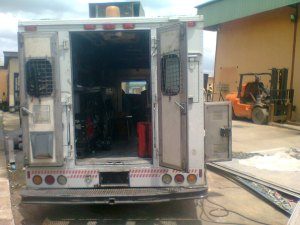The purpose of this tear down is to determine what exactly is inside some of the Toyota battery pack modules used in some of its hybrid electric vehicles.
From literature and some manufacturer sources, these batteries comes in different configurations, and chemistry(electrolytes). For this particular module(some people prefer to call it cell. This is wrong though), the chemical makeup of the electrolyte in the casing, is Nickel Metal Hydride, sealed under pressure.
MANUFACTURER MODULE SPECIFICATIONS
- 7.2 volts open circuit voltage
- 6.5 Ah capacity
- Nickel metal hydride electrolyte
- Air cooling
STATE OF MODULE AFTER YEARS OF SERVICE
Module had brittle enclosures at the top of the vent hole location, with whitish ash like granules on its casing.
PROCEDURE
- I got some modules that were lying in the shop somewhere, and brought them on the worktable to be pulled apart.

- before tearing the module apart, open circuit voltage readings was taken to ascertain the state of charge (SOC) of the module. When I carried out the test on the module, it was only 1.3 volts, instead of the specified 7.2 volts, or more.

- Use a cordless hacksaw or any cutting instrument to commenced cutting the modules from the negative terminal portion of the module, to exposure the cells inside of the casing. You can see the cells arranged in stacks in different compartments of the module. These cells are rated each 1.2 volt, connected in series, give 7.2 volts.



Fig5: Module already exposed; showing whitish granules
The whitish granules are byproducts of the chemical reactions occurring inside of the modules during recharging/discharging processes.
it is the reductions in the volume of the electrolyte in the modules service life, that results in a loss of capacity, increased internal resistance, etc.,.
Note: This tear down should not be tried on lithium ion battery packs or modules.
lithium ion modules are extremely dangerous, and could hurt or kill you, if you are not careful experimenting with.





